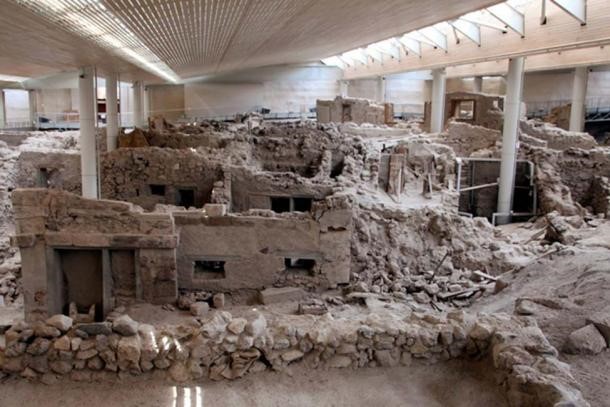
Embark on a ferry ride to the stunning Greek islands of Santorini, and you’ll journey into a unique landscape shaped by a massive upheaval towards the closing period of the Bronze Age. From either the northern or southern directions, your ship will depart the shimmering blue waters of the Aegean Sea to access a natural port lined by towering cliffs. The ferry route takes you between the larger island of Thira and its smaller counterpart, Thirasia, while straight ahead, Nea Kameni, a modest island in the center of the natural harbor, appears like a small bump amidst mountains.
It is on Nea Kameni, amidst thermal springs and sulfurous vents, that you can begin to appreciate the natural history and formation of this island. The harbor, the cliffs, and the graceful white dwellings with blue tops all belong to a massive volcanic entity.
At some point during the mid-second millennium BC, Santorini experienced a volcanic explosion. This event is among the most significant volcanic occurrences in human history. The eruption spawned catastrophic tsunamis that traversed the eastern Mediterranean, impacting the Minoans on Crete, who were among the world’s most sophisticated societies at the time.

Prehistoric Settlement of Akrotiri, Santorini ( CC BY 2.0 )
The Santorini volcano is a caldera, a type of volcano that erupts so forcefully that its center implodes, forming an enormous crater. Before this explosion, the current caldera didn’t exist. Instead, a smaller, older caldera shaped a lagoon in the north of the solitary island. Near the contemporary town of Akrotiri, a Minoan settlement existed, a thriving community with three-story structures, narrow streets, and courtyards, vastly different from the palace systems found in Crete, the Minoan homeland.
Initially, the eruption spewed ash high into the air, which later settled onto the settlements and farmland. This ominous but not instantly catastrophic phase might have served as an early warning to the locals, prompting them to evacuate the island (the absence of bodies among the archaeological findings suggests probable evacuation).
Tsunamis likely resulted from the eruption. In Crete, situated 120km away, a nine-meter-high wave swept across the northern side of the island, leaving destruction and debris in its path. The waves could have reached as far as western Turkey and possibly Israel. After the seas eventually calmed, the eruption ceased, and the formation of the modern caldera began.
Top image: The Santorini Caldera. Photo Source: ( CC BY 2.0 )






